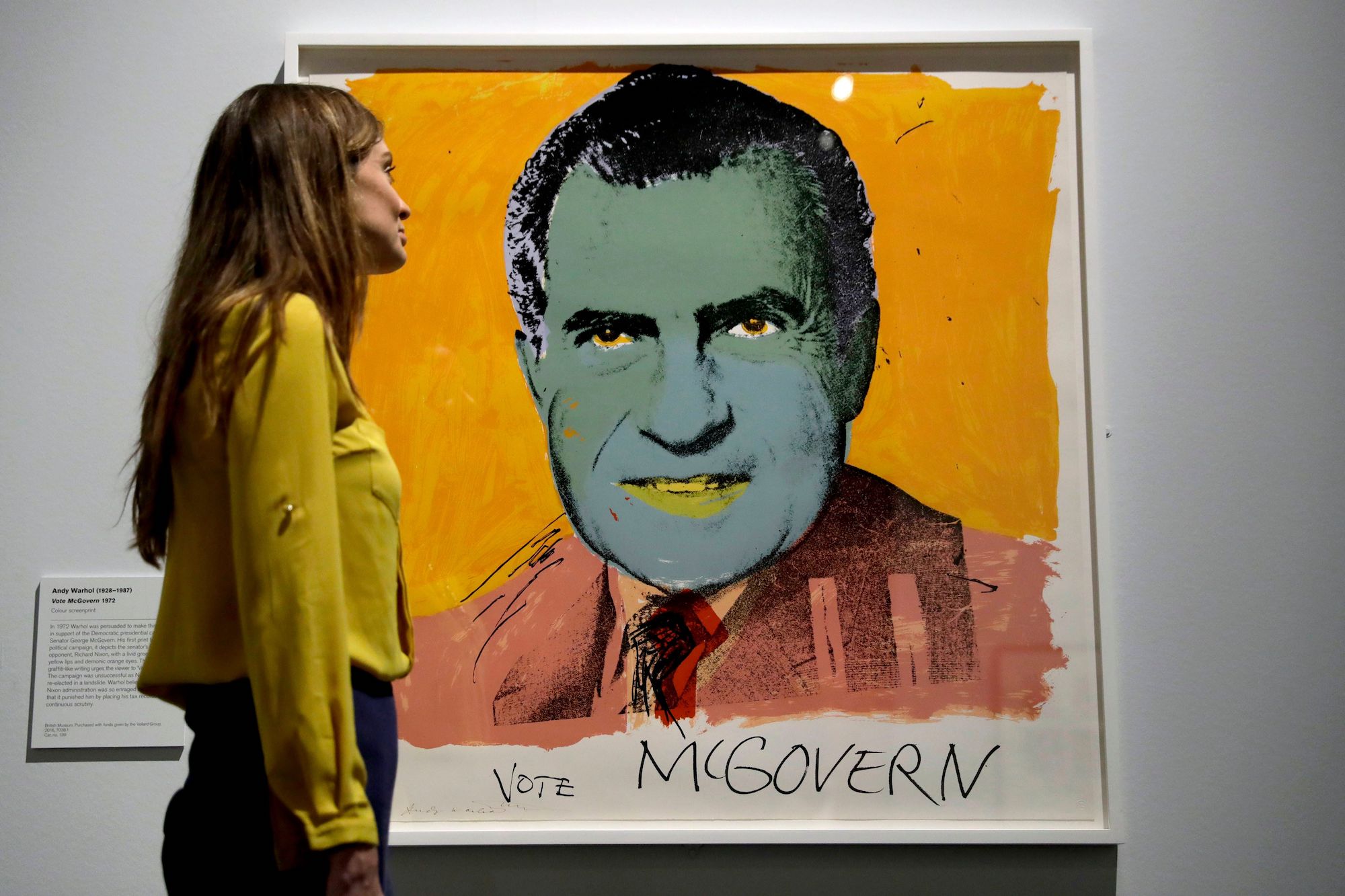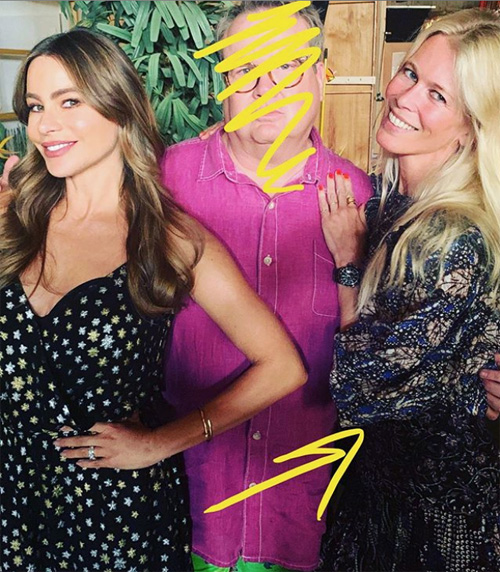
Repetition is when the same motif is repeated repeatedly in art. Artists strive to attain perfection. There's more that repetition art than just repetition. Artists want viewers to have an experience they can't find anywhere else. Here are some examples.
Andy Warhol
Andy Warhol's repetition artwork is a type of conceptual art in which the artist repeats the same image multiple time. The artist used a photograph of a skull he had bought in a flea market and reworked it six times in different ways. The skull motifs have a long and storied history and Andy Warhol was interested in updating these themes. Contrasting with the dark black skull eye sockets, Warhol uses bright candy colors. The images remind viewers how death is part of human life.
Damien Hirst
Damien Hirst's repetition art is both shockingly and hypnotic. Its subject is life, a cycle that can be repeated a thousand times. Many objects in his sculptures have no common purpose and seem horribly real. The sculptures are often rendered in great detail, which can create a trance-inducing atmosphere.

Do-Hu Suh
Do-Hu Suh is an artist from South Korea whose work explores home through repetitive forms. Born in Seoul, he lived in Berlin and New York before moving to London. His work can be seen in lightbox works, video installations and white fabric sculptures. Do-Hu Suh makes multiple versions of one figure through a series called hubs. The piece symbolizes a journey through life.
Gustav Klimt
Gustav Klimt’s repetition art is an example of his visions that transcend the ordinary to the sublime. His visions fuse the traditional and the modern, and his works are kaleidoscopic and rich in ornamentation. His central theme is the beauty of women.
Yayoi Kusama
The repetition art of Yayoi Kusama is both complex and accessible. Infinity Mirror Rooms were created by the artist in 1960s. She has since made over twenty different installations. The rooms consist in a chamber that is enclosed and lined with mirrors. Kusama’s installations offer a glimpse into her mind and immerse viewers in her vision.
Allan McCollum
Allan McCollum's repetition work focuses upon the tension between uniqueness as well as mass production. His work, which was created in the late 1960s by McCollum, explores the concept of identity in an era of mass production. McCollum's works explore the meaning of objects and their individuality in each piece, and they often deal with the issue of how people perceive themselves in the context of mass culture.

Piet Mondrian
In 1908, Piet Mondrian's Red Tree, a large painting, depicted the violent balance between red and blue skies. This vibrant work was part in a group exhibit at Amsterdam's Stedelijk Museum. The Stedelijk Museum established the Dutch avant garde. Mondrian joined two local artists societies in 1894. His early work was heavily influenced and influenced by Dutch impressionist movements.
M.C. Escher
Escher used both mathematical and physical concepts in his work. In his first work, he created abstract geometric shapes that were then gradually replaced by stylized animal characters. Escher's work was unusual in that it covered the whole surface of a sheet without leaving any negative spaces. He used shading and perspective to create some of his most iconic works. The Penrose Triangle was also a mathematical concept that he used. This geometric shape is very similar to the Mobius strip and the impossible object.
FAQ
Who was the first to coin the term Pop Music
Frank Zappa invents the term pop music. His style of music was described by Frank Zappa using the term pop music.
He said that he wanted to write music that would appeal to everyone. This is why he called the music "pop music".
Zappa also invents the phrase "You'll know it's pop when ..."". It means that something is extremely popular if you have many people enjoying it. Michael Jackson's Thriller record is one of the most successful.
Zappa has a different definition of pop music than we do today. Pop music today includes all kinds of music. However, back then only certain music was considered popular.
How can I make pop culture part of my marketing strategy
To understand how to use pop culture in your marketing strategy, you need to look at the trends within it.
Let's say, for instance, you wanted to promote a movie. What type promotion could your company run?
You could even create a trailer from clips taken from your film. You could also find a clip featuring one of your products/services and include it in the trailer.
You could also make a parody trailer by using famous films.
If your product or service is closely related to the movie's themes, you can create a campaign that follows the film's storyline. You might promote a product that can help astronauts remain healthy while in space.
Promotions could be run based on the plotline if you have a business that is related to the movie's themes. You could, for example, offer food samples to customers who purchase tickets to the movie.
What is the popular music culture?
Popular Music Culture can take many forms.
Popular music culture can be defined by its use certain types of music (e.g. rock, jazz) or lyrics. It also includes the influence of visual media (e.g., film, television and fashion) on artists' careers.
It's also about the way fans interact with their favorite artists.
The rise of superstars - musicians who have made a name for themselves - is one aspect of popular music culture.
These superstars often transcend genres and become cultural icons, and their popularity has influenced the evolution of popular music itself.
The popular music culture also includes:
* The rise recording technology – from acoustic instruments up to electric guitarists and microphones.
* The invention of record players and radios;
* The birth of rock 'n roll.
* The introductions of film and television;
* The advent MTV and VH1
* The creation and use of the internet.
How did pop culture develop?
Technology was the driver behind the growth of popular culture. It developed with the rise of mobile technology. Mass communication was made possible by the invention of radio. This led to the rise of television which then gave birth to the internet.
Computers became popular at home when people were introduced to computer games. These games were played on consoles like the Nintendo Wii and Sony Playstation 3. You can now download them online for free. Many people choose to play videogames instead of watching television.
Video games are very much in demand among teenagers and children. They can be played alone or with friends via the internet. Call Of Duty or Grand Theft Auto can be very violent. Parents worry about their children's safety while playing these games. Some people find it thrilling to see what happens when a character is killed.
Music videos are another way youth can be influenced by pop culture. They offer information on current celebrities and trends. They are loved by young people. Music plays an important part in our lives, there's no question about that!
Artists often use special effects to enhance music videos. Rappers may use makeup and wigs to make themselves more appealing. Other musicians put themselves through extreme physical challenges to show off their bodies. Many singers sing while wearing costumes.
Today there is so much music to choose from. You can listen any music you wish. This is not always good news. Music can sometimes encourage violence. People become angry when they hear certain lyrics and words. Sometimes they even commit crime.
50 Cent is a recent example of this. The line from his song Get Rich Or Die Trying is "I'm going down a motherfucker / I don’t know why, but I might." Someone heard this song and thought it meant that he was going to kill someone. A man threatened him by calling him. So 50 Cent changed the lyrics. It now says, "I'll shoot one bitch down/ I don’t know why, but I just might."
Popular culture is essential. It's important that we understand how it affects and impacts us. If we don’t, it will be difficult to protect ourselves against its negative effects.
What is pop-media culture?
Pop culture is all around. It's everywhere we go: TV, radio, film, music, magazines, newspapers, websites, social networks, etc. It's all around us 24 hours a day. It has an impact on everything: music, clothing, language and politics. So what exactly is pop culture? Wikipedia states, "Popular Culture (or Popular Culture) is the mass production of ideas and products for mass consumption." Most people believe that pop culture refers to movies, television, music, fashion, or other entertainment. Pop culture is not just entertainment. The term covers everything consumed by the masses. It includes video games, sports and toys, fast food, political campaigns, and many more.
Is Tik Tok pop-culture?
Yes, it is! It's no longer just for teens. You can share these videos with your friends to express yourself, show off, or just for fun.
More than 200 million people use the app every day all over the globe. And this number grows by millions each day.
TikTok is a great way for brands to connect and create meaningful relationships with consumers.
TikTok is also home to many influencers who have built massive followings on the platform. These creators produce original content that engages people around the world.
Don't wait! Here are four ways you can take advantage of this trend.
-
You can create viral content
-
Engage Influencers
-
Use Visuals Effectively
-
Be creative with your audience
What are some examples of pop culture in today's world?
Pop Culture is the art of the 21st Century. Pop Culture includes all forms of popular entertainment such as music, film, TV and video games, fashion, advertising and comics. Author Neil Postman coined the term in his book Amusing Ourselves To Death (1985). Pop was a method of mass communication using cheap tricks and formulaic techniques to create an illusion that spontaneity and uniqueness.
He noted, however, that many people do not feel true enjoyment due to their conditioned desire to find media experiences that make others feel superior. In addition, he argued that this type of cultural expression had contributed to the loss of critical thinking skills among young adults.
Pop culture is also known as consumerism or popular culture.
Statistics
- According to Dictionary.com, popular culture, or low culture as it is sometimes referred to is comprised of the “cultural activities or commercial products reflecting, suited to, or aimed at the tastes of the general masses of people” (7/21/19). (socialsci.libretexts.org)
- According to Kathryn Sorrells (2013, pp. 142-144), there are several ways that we can become informed consumers of popular culture. (socialsci.libretexts.org)
- [17][18][19]Definition[edit]According to author John Storey, there are various definitions of popular culture. (en.wikipedia.org)
- For example, the term hater meaning someone who strongly undermines or criticizes others, often due to pathetic jealousy, likely emerged from hip hop culture, such as the term playa hateras, used by influential rapper Biggie Smalls as early as 1995. (simplicable.com)
- Latinos represent roughly 19% of the U.S. population. (npr.org)
External Links
How To
What is pop cultural in movies?
Popular Movies Culture involves all aspects of entertainment - including books, magazines, newspapers, television programs, websites, blogs, social media, apps, games, and more.
There are many types of movies: drama, horrors, comedy, action/adventure and fantasy. Science fiction, romance, thrillers, war, documentary, animated, and westerns.
Movie plots often follow a predictable series of events that lead to satisfying conclusions.
How well a film follows this formula will determine its success.
Some common plot points are:
-
A protagonist who must overcome obstacles to attain his/her goal.
-
The antagonist is the one who opposes protagonist;
-
The protagonist must make a moral decision in a moral dilemma
-
A twist ending that changes everything.
If your story does not fit in one of these categories you might need to reevaluate or outline your idea before you write.
These questions are particularly important to consider:
-
How do I establish my setting?
-
What is my protagonist looking for?
-
Why should readers care what my story is about?
-
Where is my life going?
-
Who is my main character
-
Are there going to be any conflicts?
-
What is the climax?
-
What is my resolution
-
Is the end happy or sad?
-
Do I introduce new characters?
-
Do I have multiple settings in my story?
-
Are there subplots available?
-
Do you see any main themes?
-
Can I tell a complete book in one chapter?
-
Can I use dialogue effectively?
-
Is my language clear?
-
What is the context for my vocabulary?
-
What if I have used active voice, instead of passive?
-
Are there spelling mistakes?
-
Is my grammar correct?
-
Are there too many adverbs
-
Are there any other things I could do?
-
What is your first impression after I finish editing?
It is your job to not only write a great book, but also to publish it.